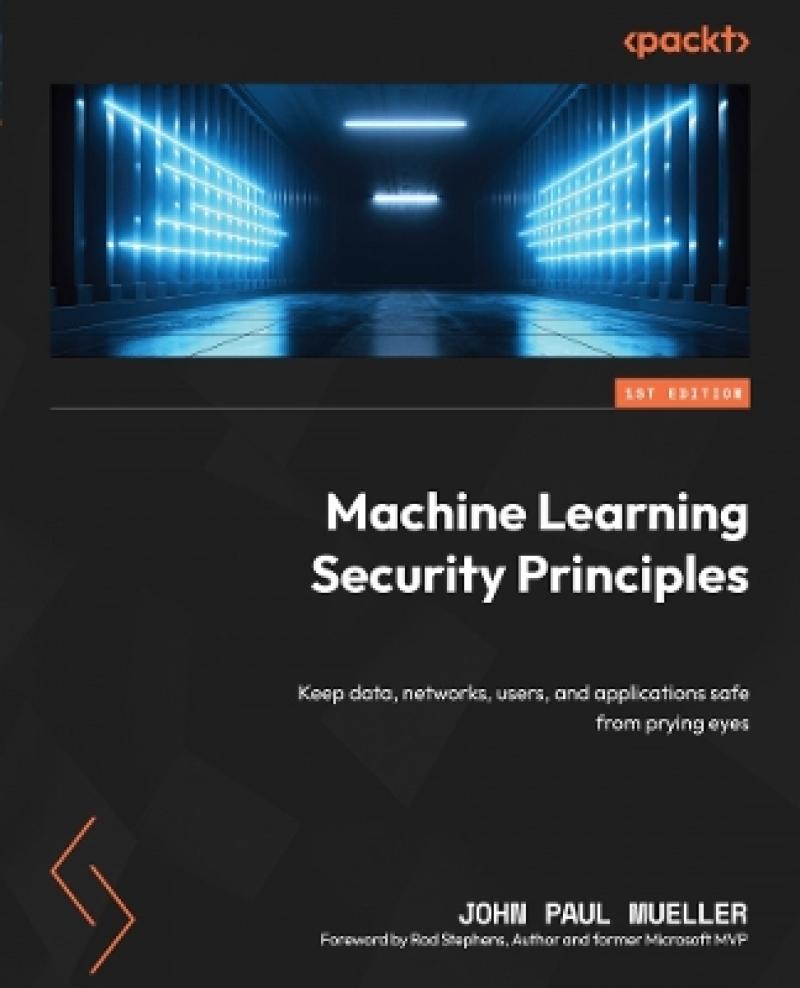Thwart hackers by preventing, detecting, and misdirecting access before they can plant malware, obtain credentials, engage in fraud, modify data, poison models, corrupt users, eavesdrop, and otherwise ruin your day
Key Features
Discover how hackers rely on misdirection and deep fakes to fool even the best security systems
Retain the usefulness of your data by detecting unwanted and invalid modifications
Develop application code to meet the security requirements related to machine learning
Book DescriptionBusinesses are leveraging the power of AI to make undertakings that used to be complicated and pricy much easier, faster, and cheaper. The first part of this book will explore these processes in more depth, which will help you in understanding the role security plays in machine learning.
As you progress to the second part, you’ll learn more about the environments where ML is commonly used and dive into the security threats that plague them using code, graphics, and real-world references.
The next part of the book will guide you through the process of detecting hacker behaviors in the modern computing environment, where fraud takes many forms in ML, from gaining sales through fake reviews to destroying an adversary’s reputation. Once you’ve understood hacker goals and detection techniques, you’ll learn about the ramifications of deep fakes, followed by mitigation strategies.
This book also takes you through best practices for embracing ethical data sourcing, which reduces the security risk associated with data. You’ll see how the simple act of removing personally identifiable information (PII) from a dataset lowers the risk of social engineering attacks.
By the end of this machine learning book, you'll have an increased awareness of the various attacks and the techniques to secure your ML systems effectively.What you will learn
Explore methods to detect and prevent illegal access to your system
Implement detection techniques when access does occur
Employ machine learning techniques to determine motivations
Mitigate hacker access once security is breached
Perform statistical measurement and behavior analysis
Repair damage to your data and applications
Use ethical data collection methods to reduce security risks
Who this book is forWhether you’re a data scientist, researcher, or manager working with machine learning techniques in any aspect, this security book is a must-have. While most resources available on this topic are written in a language more suitable for experts, this guide presents security in an easy-to-understand way, employing a host of diagrams to explain concepts to visual learners. While familiarity with machine learning concepts is assumed, knowledge of Python and programming in general will be useful.
Les mer
Table of Contents
- Defining Machine Learning Security
- Mitigating Risk at Training by Validating and Maintaining Datasets
- Mitigating Inference Risk by Avoiding Adversarial Machine Learning Attacks
- Considering the Threat Environment
- Keeping Your Network Clean
- Detecting and Analyzing Anomalies
- Dealing with Malware
- Locating Potential Fraud
- Defending against Hackers
- Considering the Ramifications of Deepfakes
- Leveraging Machine Learning against Hacking
- Embracing and Incorporating Ethical Behavior
Les mer
Produktdetaljer
ISBN
9781804618851
Publisert
2022-12-30
Utgiver
Packt Publishing Limited; Packt Publishing Limited
Høyde
235 mm
Bredde
191 mm
Aldersnivå
01, G, 01
Språk
Product language
Engelsk
Format
Product format
Heftet
Antall sider
450
Forfatter
Foreword by

